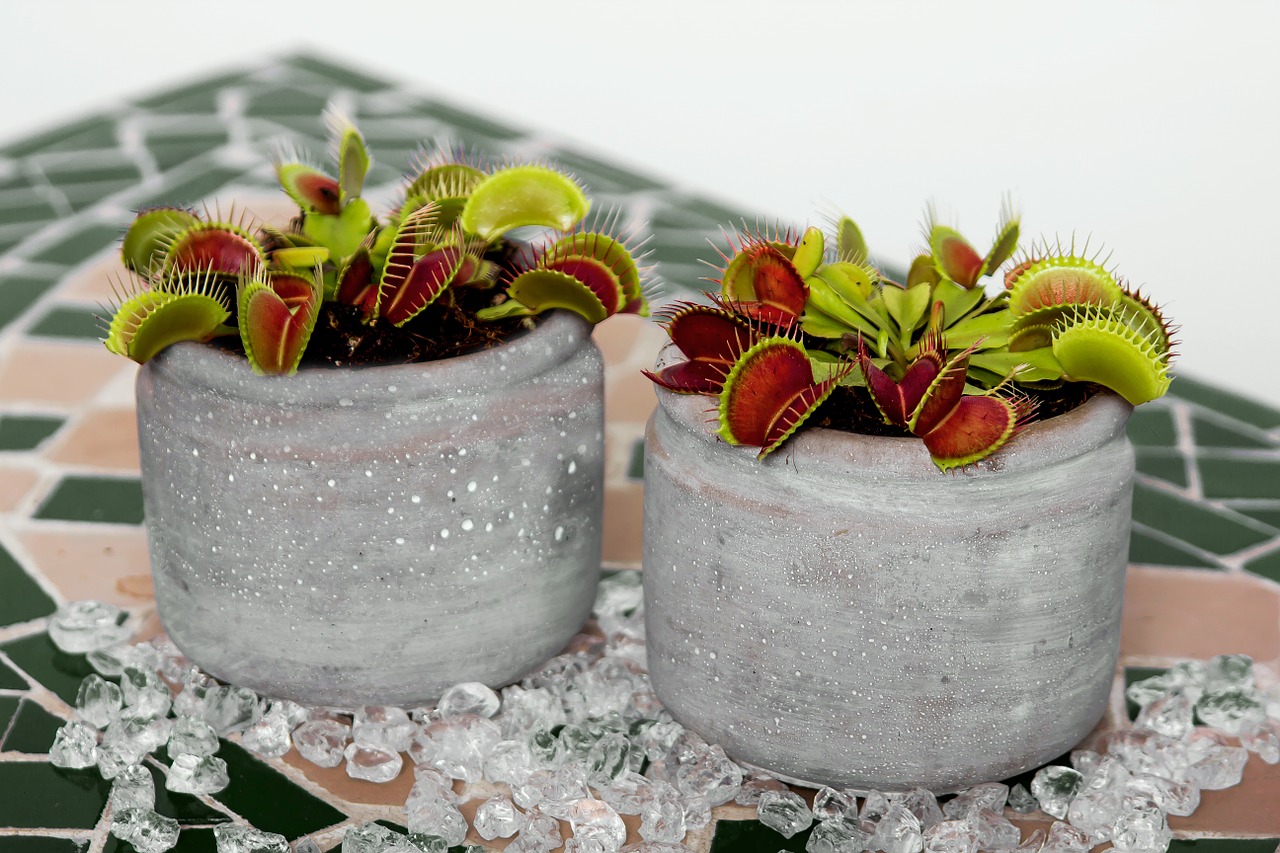
Despite the impression you might get from the movie Little Shop of Horrors, Venus flytraps are not particularly dangerous plants. They are among the few carnivorous plants, though, so it’s expected that people may have questions about them, like are Venus flytraps safe around kids?
The answer is absolutely yes. In fact, you should be more worried about kids or pets endangering your plant than vice versa. Let’s clear up a few myths about Venus flytraps in order to better understand why these plants are perfectly safe.
Myth 1: Venus flytraps have teeth.
It kind of looks like these plants have teeth, but they do not. They don’t chew anything that they eat. Instead, they use digestive juices, much like those in your stomach, to eat insects. The perimeter of the moving leaves that look like the plant’s mouth have cilia that could be mistaken for teeth. In truth, what these cilia actually do is hold the two leaves together once they close, so that whatever is trapped inside stays there.
Myth 2: Venus flytraps bite people.
Okay, so this one isn’t completely a myth. The truth is that a Venus flytrap will close its “mouth” on pretty much anything that falls or goes inside it. But if your kid puts their finger inside the plant, don’t worry. It won’t cause any pain or damage at all. The plant cannot keep a human finger trapped.
To see how long it would take for a Venus flytrap to actually cause harm to your skin, check out this experiment. Note that we do NOT suggest treating your plants this way.
Myth 3: Flytraps eat anything that falls into their mouths.
Actually, a housefly is about the biggest thing most flytraps can eat. More often, they feed on mosquitoes and gnats, making them excellent indoor insect control. In nature, if something they can’t eat falls inside their leaf openings, like a nut or a rock, the leaves reopen in about 12 hours or so to let the object can come out.
Bonus Myth: Insects are all my plant needs to survive.
Just like other indoor plants, a flytrap still needs basic soil or growing media, a regular supply of water, and sufficient sun or indoor lighting. Insects are a supplemental form of nutrition for them. They actually receive nitrogen and phosphorus--essential nutrients for plants--from the bugs. This has nothing to do with whether Venus flytraps are safe, but it’s important information for anyone wanting to grow these carnivorous plants at home.
What to know about keeping your flytrap safe from kids and pets
Although your child will be fine if they stick a finger in the plant’s open leaves, they really should not. Venus flytraps have small trigger hairs inside those leaves, and when they feel something moving and bending those hairs, they close their leaves. The problem is that this takes up a lot of energy from the plant, to close and reopen. It’s worth it if they get a nutritious insect, but not so much if all they get is your kid’s sticky finger.
As for any furry friends you may have in your home, these plants are not toxic to them. You probably don’t want to let your pets eat them, but they will be fine if they do. Most reptiles and amphibians will not try to eat Venus flytraps, but it’s not a good idea for the plant to be kept in a shared terrarium with exotic pets.
We often have Venus flytraps in stock at Indoor Cultivator. Contact us to find out what interesting plants we have available right now.
